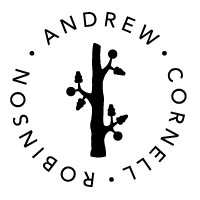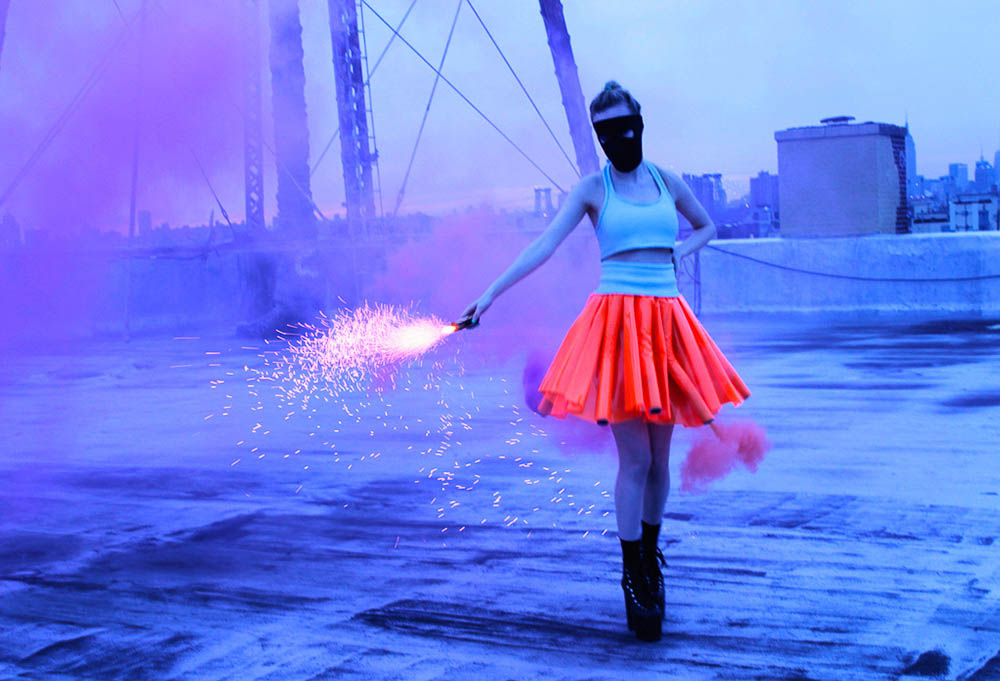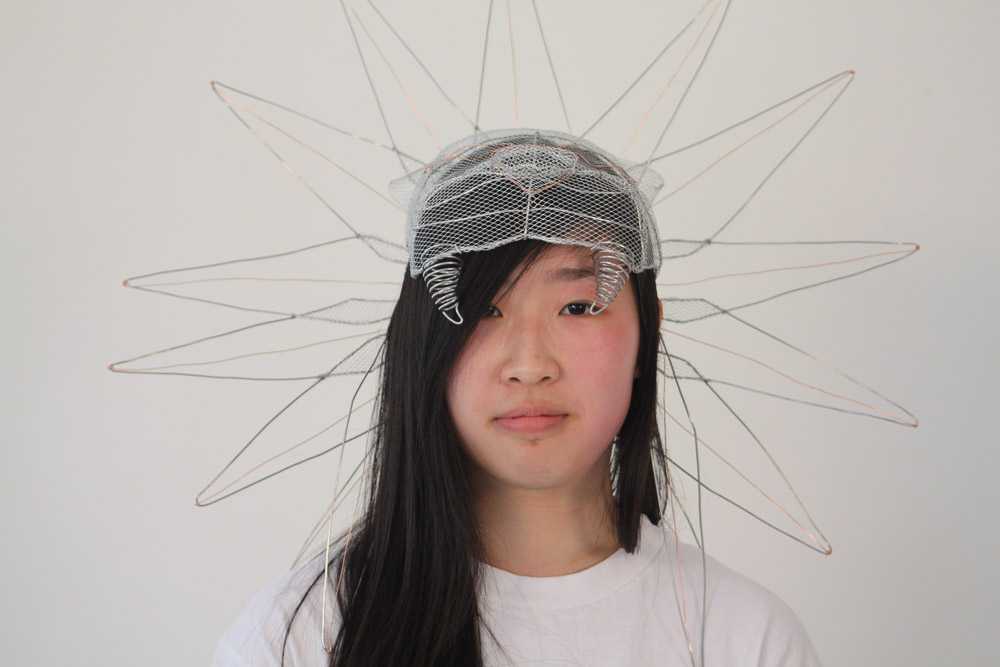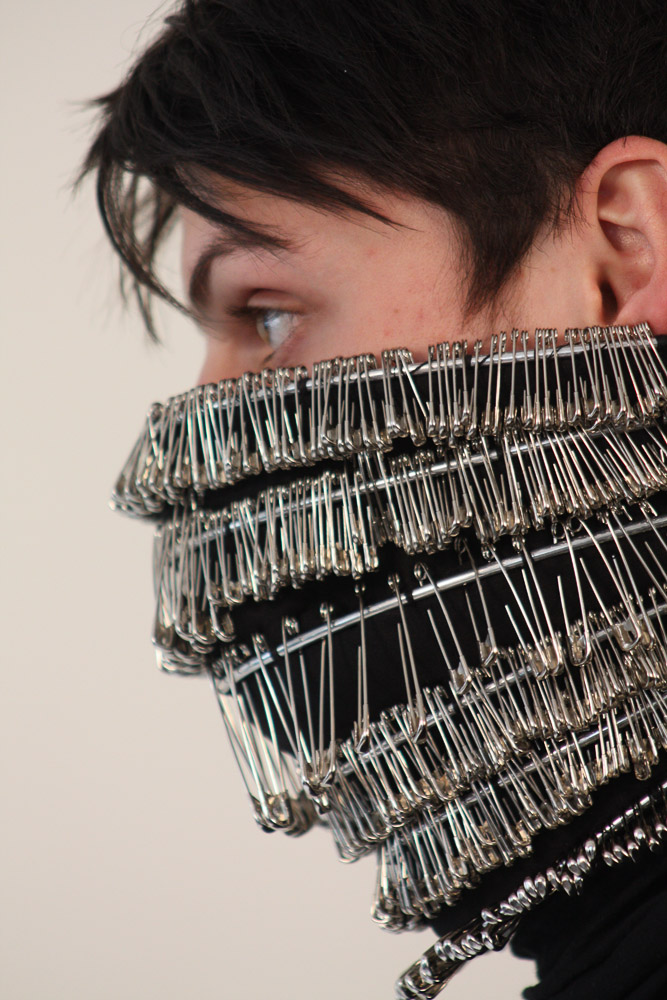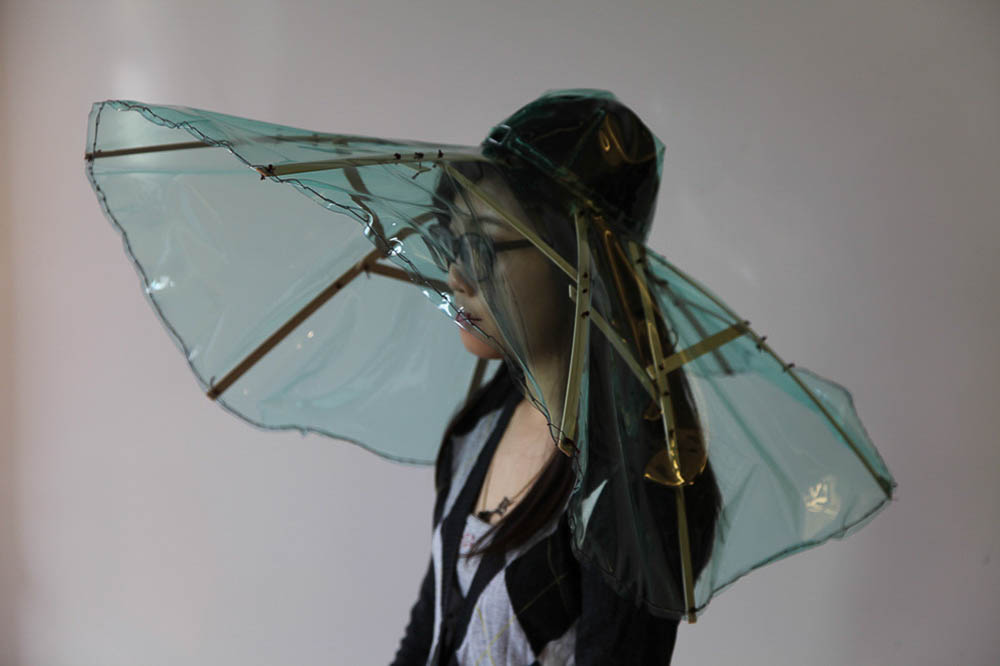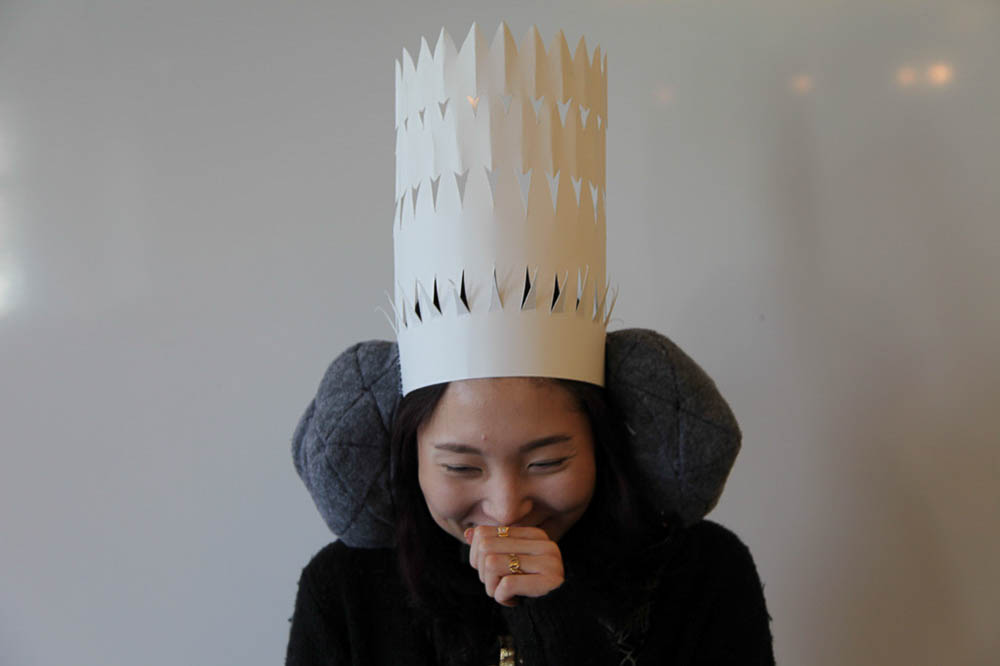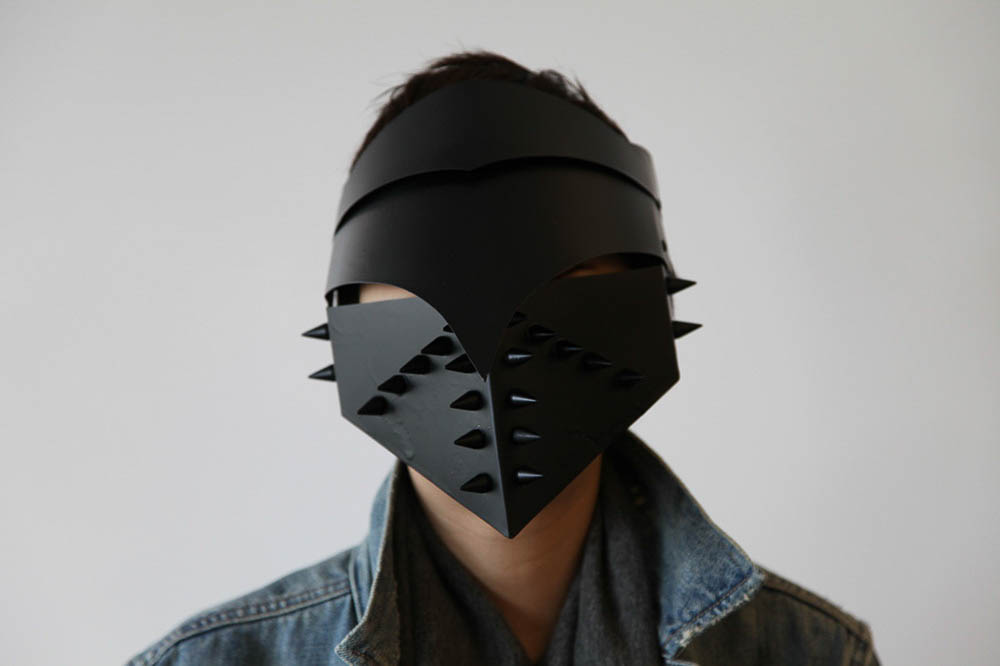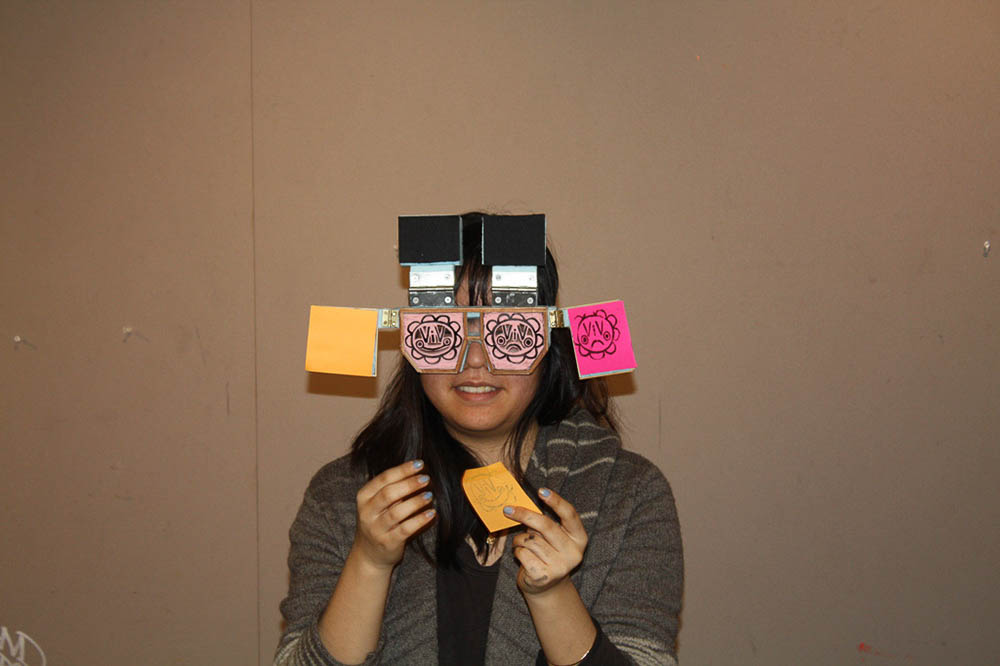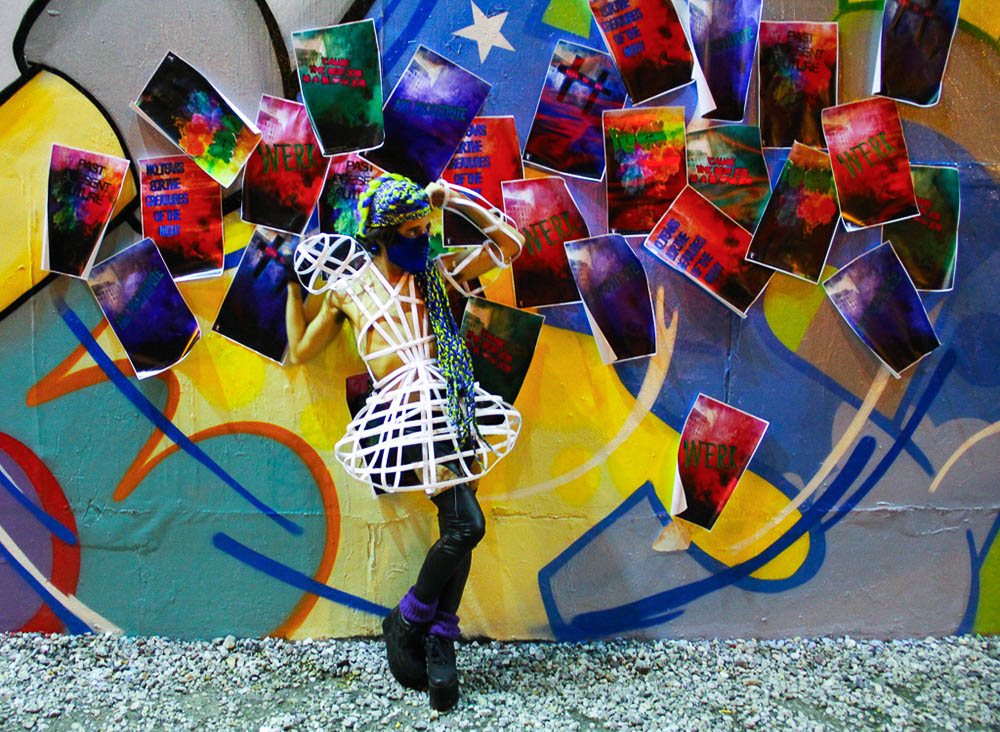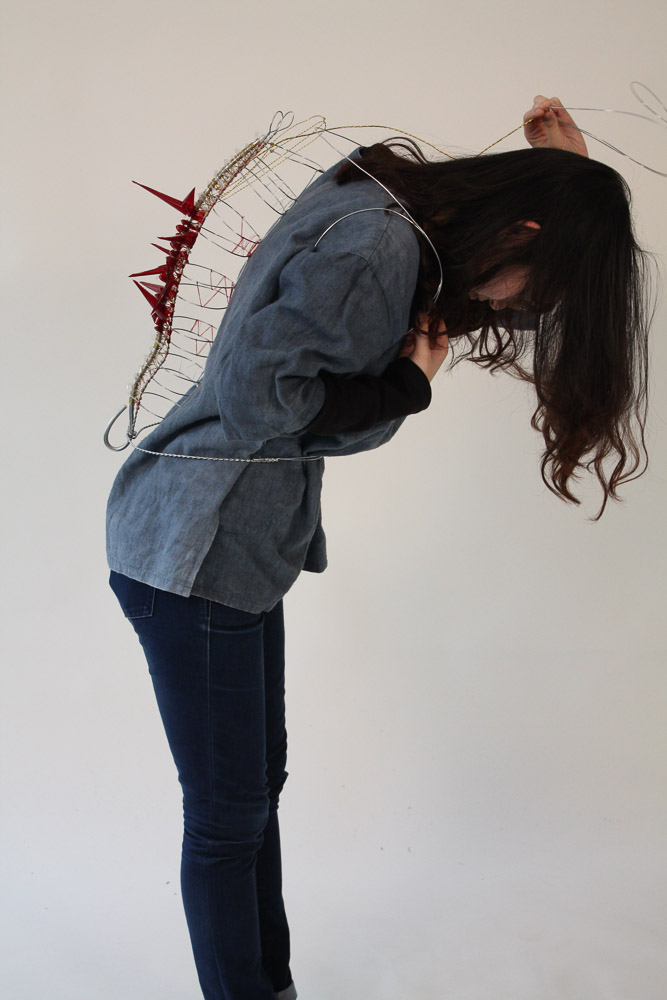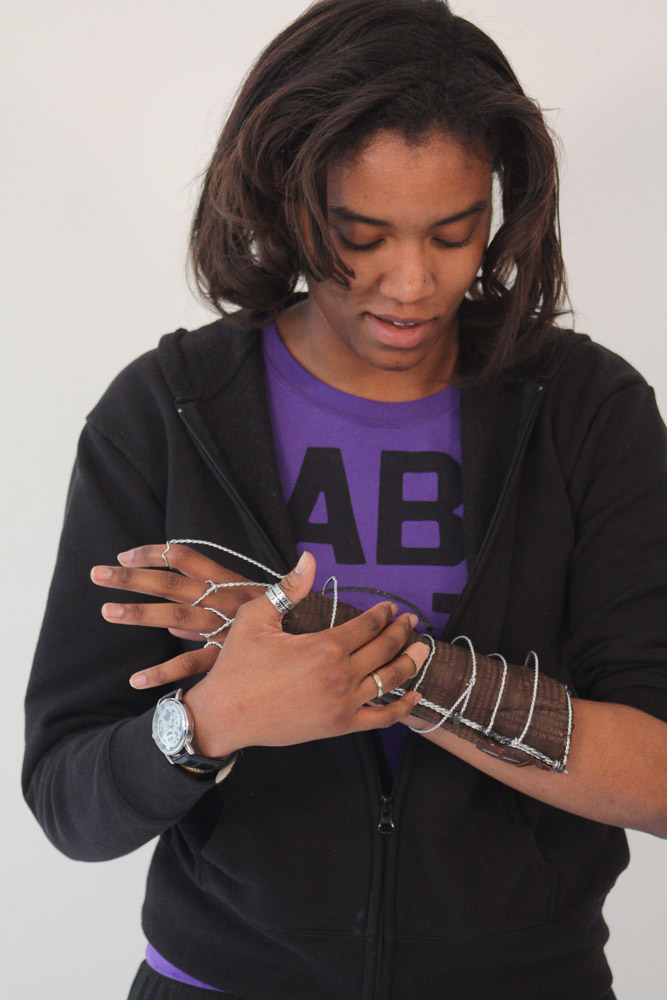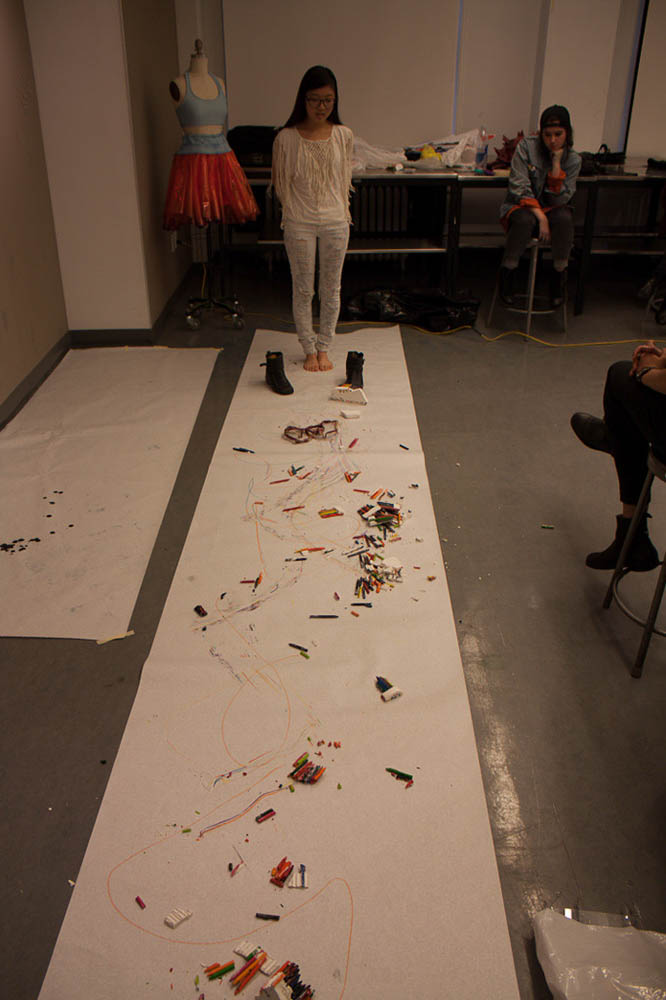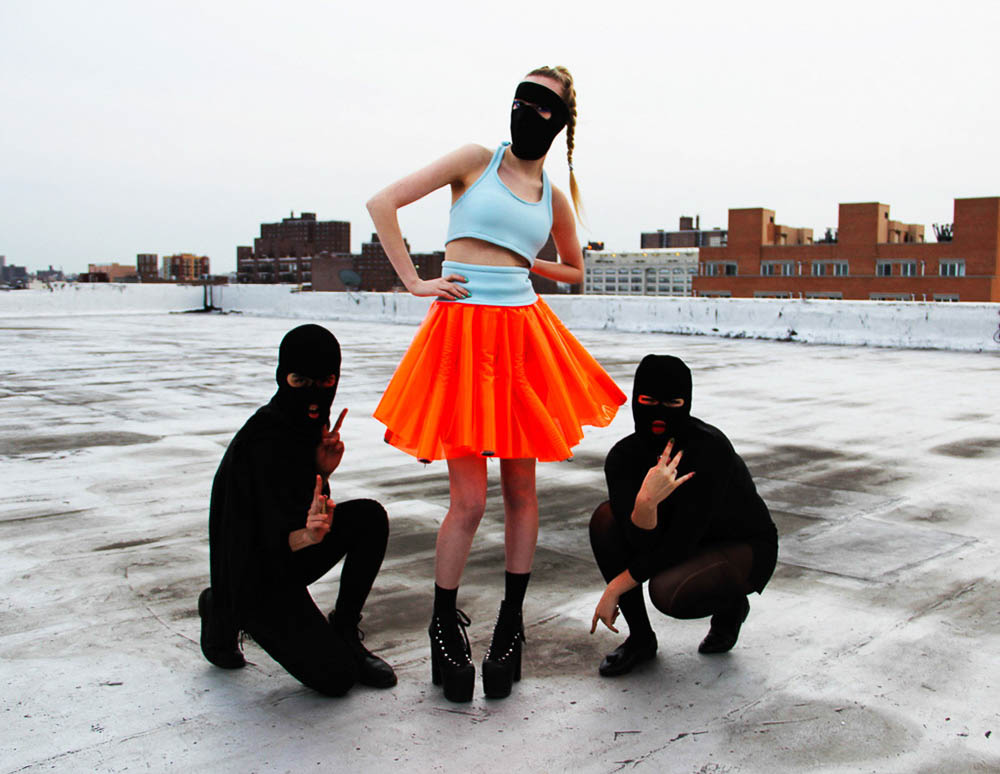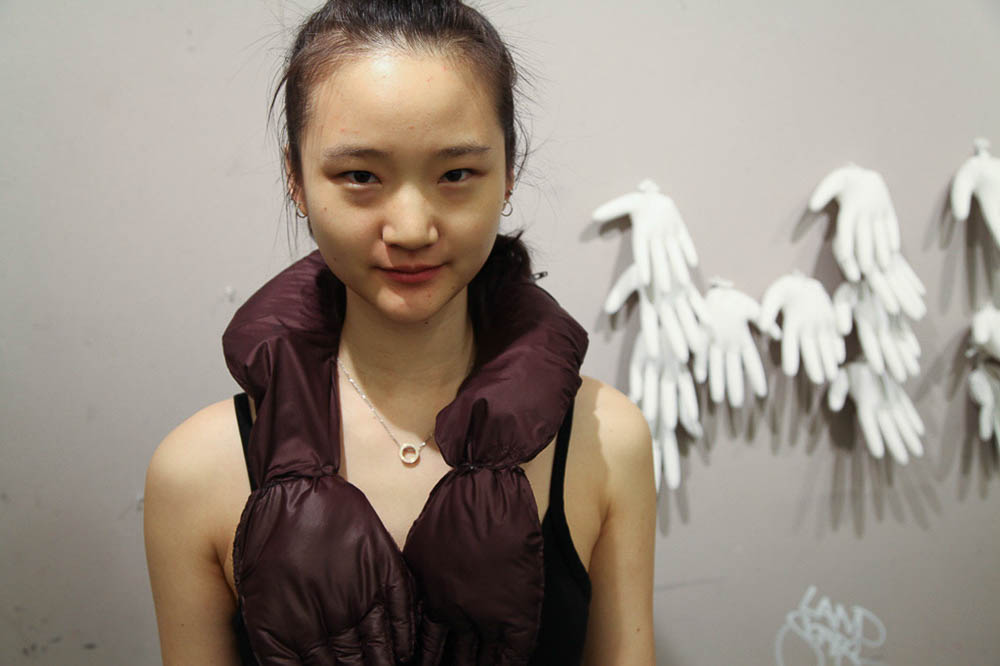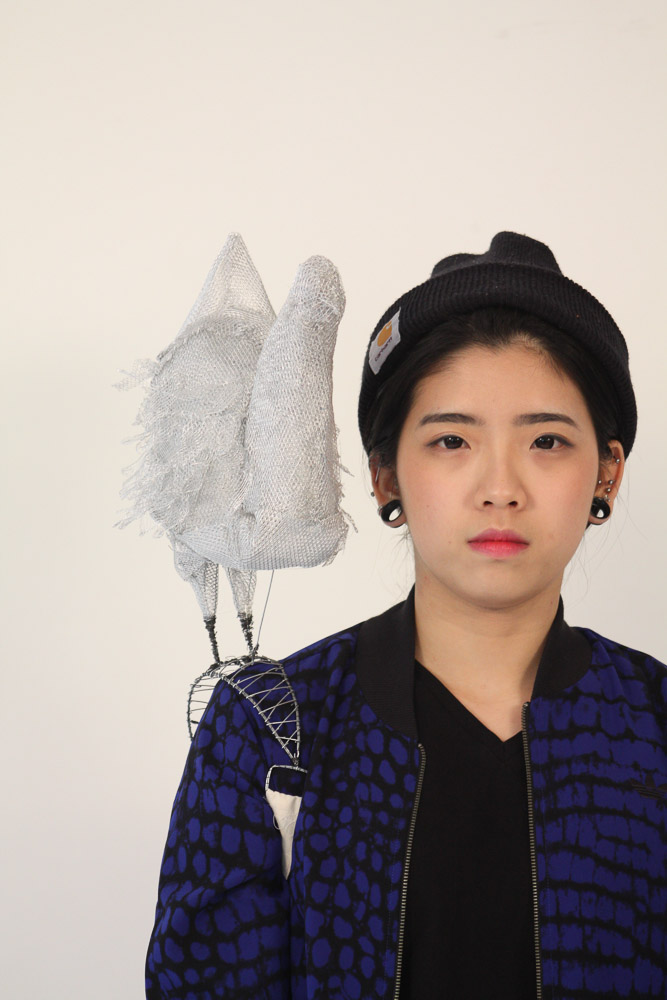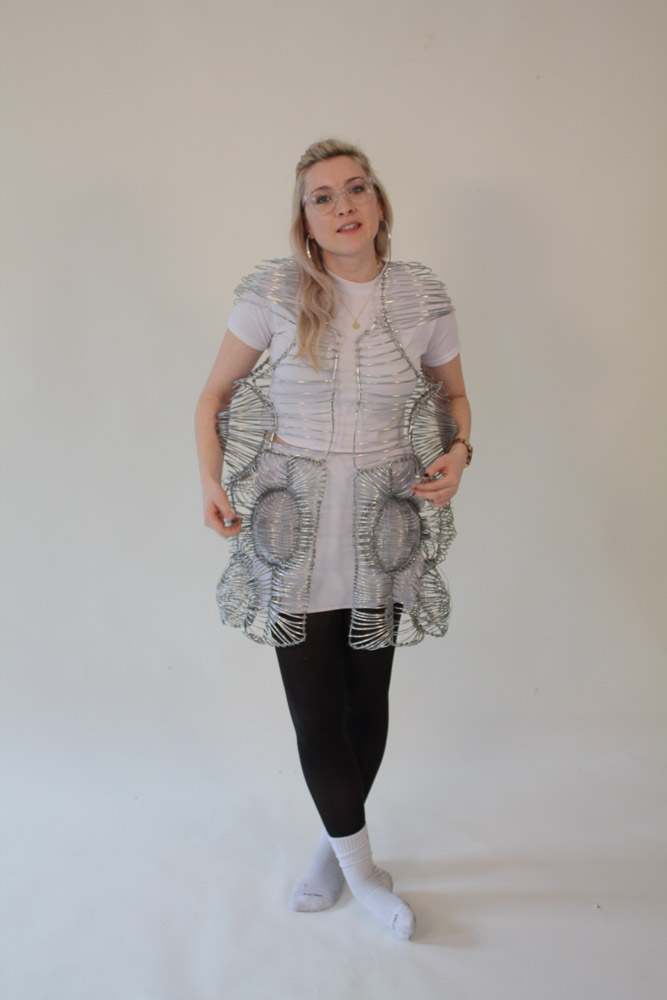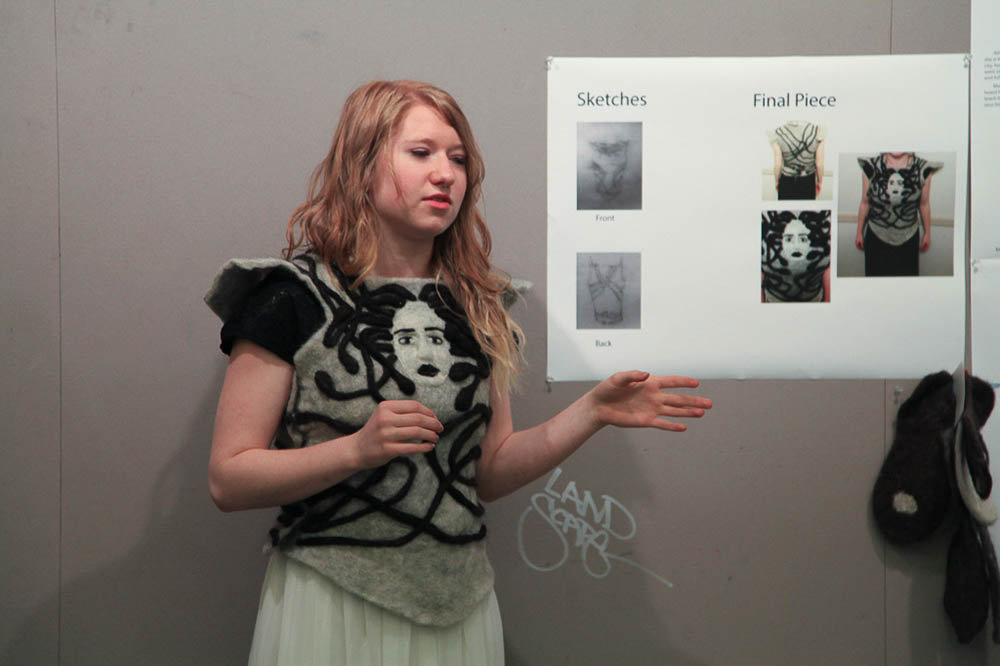A sculpture studio exploring the body as a site of intervention.
Building upon the abstract principles of art and design this course serves as a pedagogical bridge between introductory sculpture and three dimensional design studios. The common vehicle for all of our three dimensional study in this course is the body. The study of the body is essential to our understanding of all the art and design disciplines. It is the consistent and ever present, essential form that is at the core of all art and design study.
Students have chosen to study in one of the following groups:
- The body as form.
- The body and place
- The body in time.
In Body as Form, our studio work will be focused on studies in the practical, expressive and communicative potentials of body coverings. Projects may include the design and construction of body coverings, shelters, adornments and extensions (prostheses). Various technologies will be appropriated to extend the capabilities of the body and enable it to physically support a variety of 3D form. Projects will explore specific cultural contexts.
This studio option will explore the surface and anatomical properties of the human body and its ability to move. All work will be body based; worn on or appended to the body and organized around particular parts of the body. Projects may be associated with a piece of theater or reference an historical event or a particular cultural position.
Students will be introduced to pattern making in a broad sense, basic sewing and other joining skills, a large range of materials (including soft materials) and the structural and practical implications of working with body based materials. Color and light will be part of a study both of the objects created and the implied performative component. Students will be both constrained by, and liberated in, their exploration of the physical properties of the human body. They will research historical prototypes for inspiration.
Learning Outcomes
There will be common themes studied in the different 3D sections even though the projects that are the vehicles for exploration will be quite different.
- UNDERSTAND the importance of the human figure in art and design.
- UNDERSTAND of the physical structure and actual dimensions of the human form and to study specific functions of the human body.
- DEMONSTRATE an ability to perceive, formulate, analyze and solve problems and to orally present, promote and critique solutions.
- DEMONSTRATE an understanding of the fundamentals of three dimensional design, and how these are related to the body.
- To develop an UNDERSTANDING of context and environment and their influence on the design of forms.
- DEMONSTRATE the fabrication of materials, and patterns for designed elements to be worn on the body.
- UNDERSTAND and explore a wide range of materials that respond to the specific properties of the body.
Project 1 The Head Measured
Students were asked to design a headpiece they could wear that protects them from a real or imagined threat. Consider function, practicality and construction as well as metaphor. Students began by investigating the structural properties of the skull and its particular formal and dimensional properties. Milliner Victor Osborne visited our class and we worked with him to learn about the craft of hat blocking, steaming felt and blocking it over traditional and hand made blocks. Students utilized pattern making and the considered the choice of materials. They researched the history of headpieces from the utilitarian – bike and armored helmets for example to the ritual – Native American Navajo ceremonial feathered headdresses. This work resulted in the production of mood boards, written research in their sketchbooks, drawings, models, and the production of the headpieces.
Student Work
Project 2 THE BODY BY EXTENSION
The human body is a complex combination of muscle, tissue and bone that when used in tandem can exert force with great dexterity into space – think of tools, sports equipment and weapons. Understanding how this happens one can build objects to withstand the natural forces structures are under to perform actions away from the body.
These forces are compression, tension, shear and torsion defined as follows
- Compression is a pressing force
- Tension is a pulling force
- Shear is a sliding force
- Torsion is a twisting force
Students began by making drawings of simple movements, flexing, pulling, picking up, pushing, twisting, etc. with the goal of trying to capture and understand the mechanical nature of the body and its actions. The class discussed Richard Serra’s verb list as a means an example of focusing the vocabulary and conceptual framework for design and making. Also discussed were the works by Rebecca Horn, Alexander McQueen, et al. In addition to demonstrating a verb or action which extends from the body, students were asked to make a mark and sign their name or initials with the body extension.
Student Work
Project 3 THE BODY AS THEATER
Students explored the body as both the vehicle and space in which the student will tell their story with garment and tableau.
Students made a body covering that they (or a model) would wear. The body covering / sculptural form extends into and becomes an environment/tableau that relates to or represents a character from literature or history. It should consider and make use of the following criteria; Be metaphorical, Use color and light, be wearable on the human form. Students looked at multiple examples in fashion and art including Nick Cave, Rashaad Newsome, Basil Twist and Mummenschanz, et al. Demos on materials exploring sewing, and mechanical connections, needle felting, cold dyes and hot acid dyes, printing on fabrics, etc. Culminating in a presentation of their final project which included a series of presentation boards or a look book as well as the finished garment ensemble.
